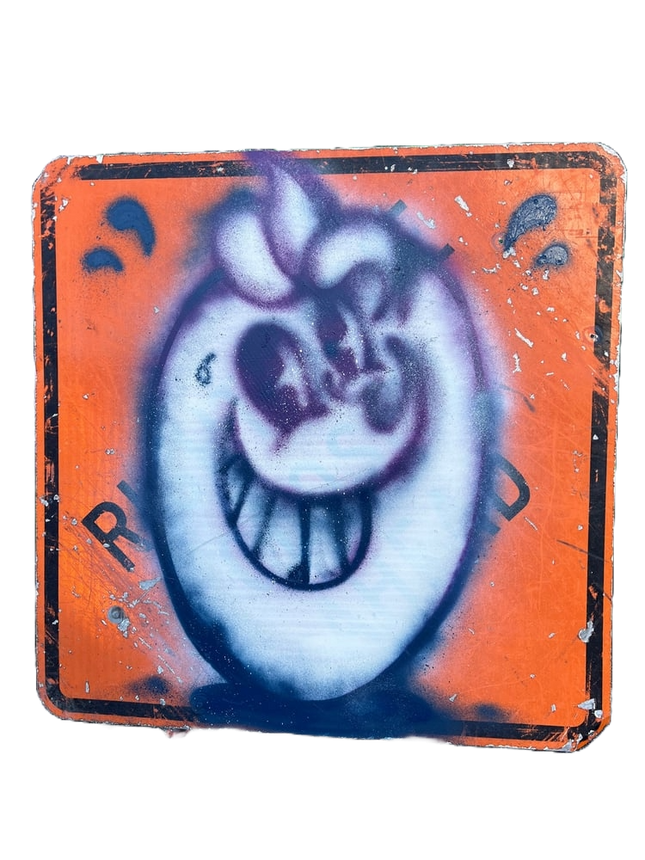
Street Art
-

Atomik Lagos Original Street Sign Spray Painting by Atomik
Lagos Original Street Sign Spray Painting by Atomik Mixed Media Modern Graffiti Paint Pop Art on Real Metal Ready To Hang. 2023 Signed Original Painting on Reclaimed Metal City Road Construction Sign Artwork Size 36x36 of Spray Painted Smiling Atomik Orange In the vibrant world of modern graffiti and pop art, Atomik emerges as a unique voice, creating pieces that resonate deeply with art aficionados and street art enthusiasts alike. His 2023 artwork, titled "Lagos," is a prime example of his genius. Made on a reclaimed metal city road construction sign, this piece is not just a painting but a marriage of art and urban elements. Measuring 36x36 inches, "Lagos" is an ode to the urban environment from which Atomik draws inspiration. The centerpiece, the spray-painted smiling Atomik Orange, is instantly recognizable and evokes a sense of familiarity, bridging the gap between the street and the art gallery. The backdrop, a real metal city road construction sign, adds layers of authenticity and rawness to the piece. Its weathered appearance, marked with signs of wear and age, tells a story of its own, setting a contrasting stage for the vibrant and playful Atomik Orange. This painting does more than just showcase Atomik's technical prowess with a spray can. It challenges the boundaries of traditional art forms, blurring the lines between graffiti, pop art, and found object art. By choosing a reclaimed metal sign as his canvas, Atomik comments on the transient nature of urban life and the ever-evolving face of cities. For those who appreciate art that speaks to contemporary issues while staying rooted in traditional techniques, "Lagos" is a testament to Atomik's ability to capture the zeitgeist of modern urban culture. It's not just a piece of art; it's a conversation starter, a narrative, and a reflection of the times we live in.
$1,174.00 $998.00


